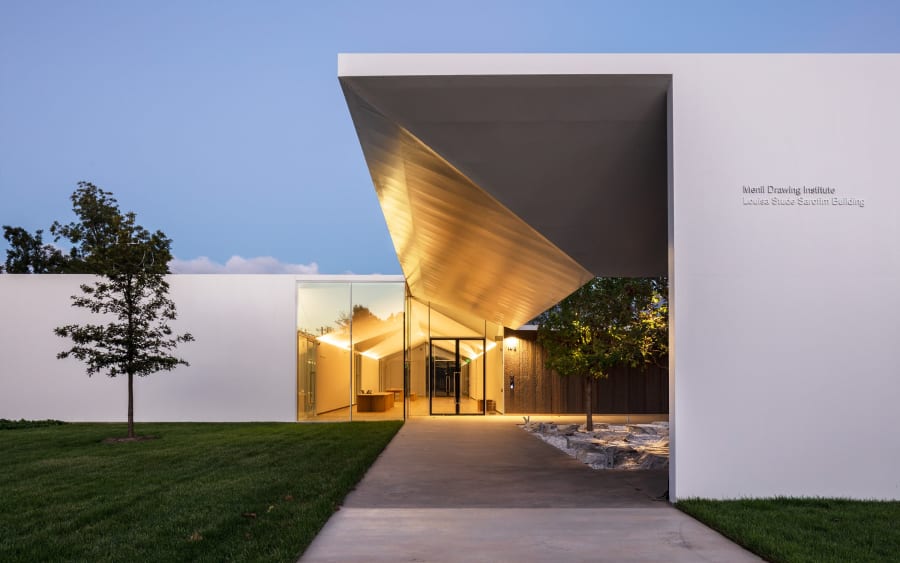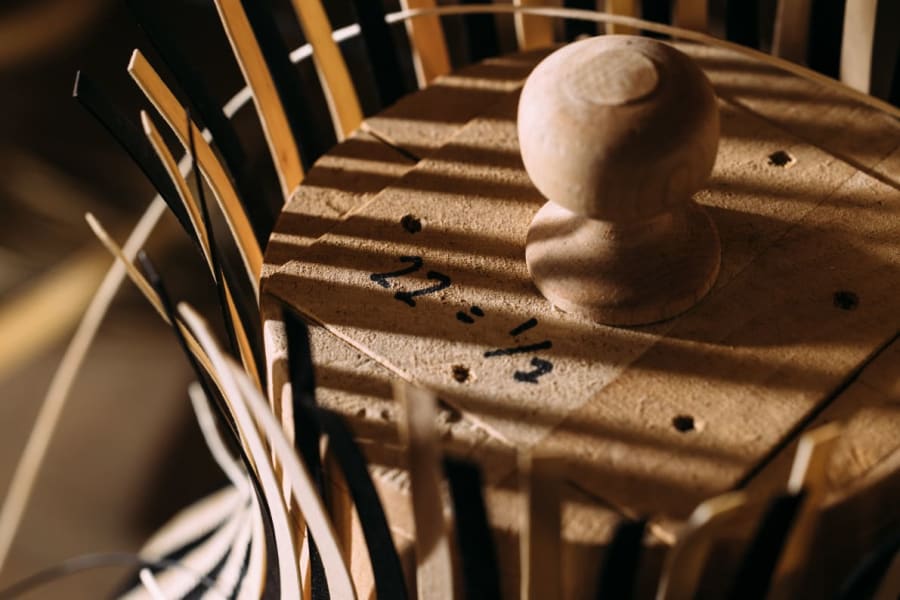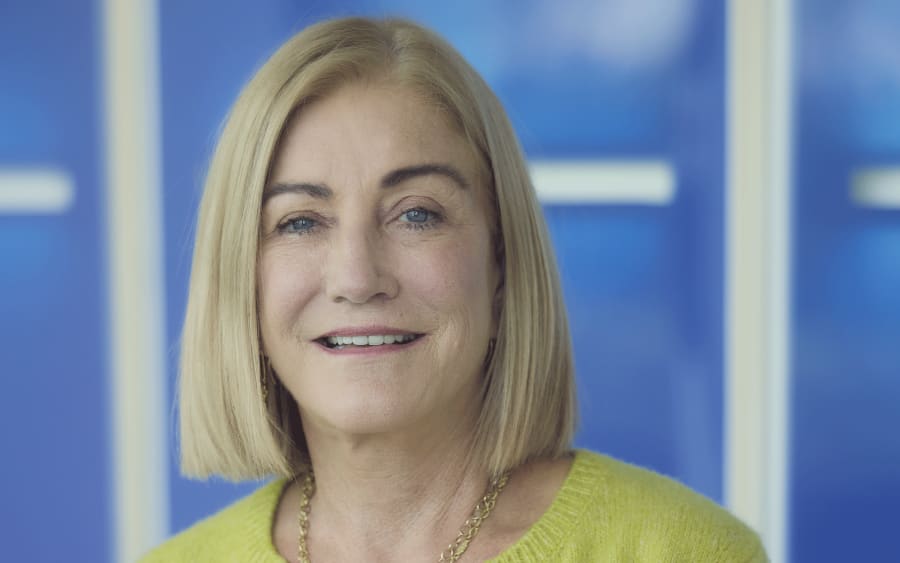
All it takes is a ‘Yes’
Find out why small moments of affirmation can be big catalysts in the lives of artists and creatives

All it takes is a ‘Yes’
Find out why small moments of affirmation can be big catalysts in the lives of artists and creatives

All it takes is a ‘Yes’
Find out why small moments of affirmation can be big catalysts in the lives of artists and creatives

All it takes is a ‘Yes’
Find out why small moments of affirmation can be big catalysts in the lives of artists and creatives

All it takes is a ‘Yes’
Find out why small moments of affirmation can be big catalysts in the lives of artists and creatives
By Tom Morton
‘Everything in the world began with a “yes”. One molecule said “yes” to another and life was born.’ So wrote the Brazilian novelist Clarice Lispector in her book The Hour of the Star (1977), and she is far from the only major cultural figure to explore the vital importance of this seemingly modest word. Victor Hugo claimed in Les Misérables (1862) that humanity ‘lives more by affirmation than by bread,’ while for James Joyce, ‘yes’ was ‘the most positive word in the English language’ – one reason he concluded his great Modernist novel Ulysses (1922) with the ecstatic assertion ‘yes I said yes I will Yes.’ On John Lennon’s 1973 solo track Mind Games, the former Beatle famously sang ‘Yes is the answer.’ It’s a line that looked back to his first encounter with the work of Yoko Ono at London’s Indica Gallery in 1966 – the installation consisted of a wooden ladder, and a magnifying glass dangling from a chain. Climbing its steps, and training the lens on the gallery ceiling, he was confronted with a single, handwritten word: ‘Yes’. As origin stories of era-defining romantic and artistic partnerships go, it’s hard to beat.
Almost every creative career has an inflection point when a ‘yes’ proved crucial – opening doors onto new worlds, new possibilities. Emerging from the ’90s skate scene, Stefan Marx is a German artist whose vibrant drawings and text works – which appear across gallery shows, artist’s books, record sleeves, and apparel – are celebrated for their ability to find playful humor in the stuff of everyday life. On a call from his Berlin studio, he tells me that within his own practice ‘there is almost a “yes” every day,’ although this is a very different type of experience from ‘when other people say “yes” to me.’ Looking back on his days as a young artist, he recalls he ‘did not hear all the “nos” out loud’ but ‘you feel them, you care.’ Everything changed in 2008, when he was offered his first solo show by the Hamburg gallerist Karin Guenther, a moment of ‘freedom’ that ‘allowed my work to grow.’ Today, he remains mindful that ‘when a “yes” from another person comes into my life […] I don’t take it for granted.’ Even somebody buying one of his artist’s books is, he says, ‘a small “yes.”’
The Uruguayan gallerist Piero Atchugarry’s ‘yes’ feels, on the face of things, counter to received art world wisdom. In 2012, he was studying for a Masters’ degree in New York, and having wanted to open a gallery since visiting the Venice Biennale as a teenager, was ‘looking around Tribeca for the perfect space. A Chinese friend told me “Piero, work with what you have,” and I remembered a house my family owned, in the village of Garzón, Uruguay. I said to myself, “Yes! I can invite some artists there, hold an exhibition, kick things off” […] I liked this impossible paradigm. First thinking about New York, the center of the art world, and then deciding instead on my little home village, where 200 people live, imagining it as a sort of Latin American Marfa.’ As Atchugarry observes, in this high-risk industry, ‘it takes a lot of courage to follow your own intuition.’ Fast-forward to today, and he has two spaces in Garzón (one of which houses an artists’ residency program), and a thriving gallery in Miami. Saying ‘yes’ to himself clearly paid off.
Widely considered one of the key American artists of his generation, Matthew Day Jackson was, he says, ‘a poor student’ as a teenager, who ‘only excelled in sports’. He adds ‘[I] enjoyed art, but didn’t really think I was good at it,’ and had no notion that it could be studied beyond high school. So when his art teacher encouraged him to apply to the Pacific Northwest College of Art, ‘I thought Mr. Freeman was putting me on.’ It was Jackson’s ‘grandfather Fred Day – ex-cop, ex-loan manager, ex-scuba diver, and self-taught photographer’ – who took slides of Jackson’s work for his portfolio, which won him not only a place at the college, but two vital scholarships. ‘I didn’t know about art aside from skateboard graphics, album covers, and local indigenous art,’ he tells me, so ‘going to art school created a paradigm shift in my awareness […] If I was to go back in time, and tell my younger self what I’m doing now, he’d think I was lying. I thought I’d complete my studies, then return to working in a grocery store like my parents. It’s what I knew. Having permission from Mr. Freeman and my grandfather set me on a path that I wouldn’t trade for the world.’
If mentors can prove crucial to creative careers, so too can a radical change of scene. Gina Buenfeld-Murley, Exhibitions Curator at Camden Art Centre, London, relates how in 2017, she ‘said “yes” to the call of the jungle and the enchantment of the stars.’ She goes on to explain, ‘I took a sabbatical to pursue research in the Amazon rainforest, inspired by the animist cosmologies of the Yawanawá, Shipibo Conibo, and Huni Kuin (Kaxinawá) communities – in particular, their botanical knowledge and a kind of wisdom that was applied very directly in an intimate and respectful codependence with the fabric of the forest and wider cosmos. Afterwards, I returned to curating contemporary art in London as if with new senses, and a mind unveiled to the potential it could entail.’ Buenfeld-Murley’s time in the Amazon ‘enabled another “yes” – bringing my own spirituality (unapologetically) into my creative practice and exploring the intersectionality between modes of embodiment, and the philosophical and art historical foundations of my practice to date. More tangibly, it led to a series of exhibitions.’ Among these was ‘The Botanical Mind: Art, Mysticism and the Cosmic Tree’ at Camden Art Centre (2020–21). Anybody fortunate enough to have seen the show will remember it as a groundbreaking exploration of the centrality of plant life to the human consciousness, which roved across centuries, continents, and artistic forms with intelligence, passion, and considerable curatorial daring.
Over the course of his 30-year career, the London-based Bavarian artist, photographer, and filmmaker Norbert Schoerner has worked with many of the world’s most innovative fashion brands and style magazines, been the subject of major museum solo exhibitions, and published numerous monographs and artist’s books. Given that he’s never followed what he describes as ‘a linear path,’ nor fitted into ‘an established category,’ it’s unsurprising he finds it difficult to identify a single ‘yes’ that transformed his creative life. Instead, he cites three: his first shoot for the iconic British style title The Face in 1989; meeting Miuccia Prada in 1997 (with whom he continues to collaborate to this day); and more recently his work as an artist coming to the attention of Matthias Wagner K., Director of the Museum Angewandte Kunst, Frankfurt, Germany, which resulted in Schoerner’s solo show ‘The Nature of Nature: Fukushima Project’ at the institution in 2022. He tells me ‘every time a “yes-opening” occurs, there’s a recognition that I’m experiencing a catalytic moment […] Working between fine art and [brand and editorial] commissions presents me with a broad set of challenges, obstacles to overcome, oscillating ups and downs. So, every moment of progress, however small, always results in a feeling of immense joy.’ It seems Lennon was right. For Schoerner – as for many creatives – ‘yes’ really is the answer.
All it takes is a ‘Yes’, especially for artists who push boundaries to create something new and meaningful. Art Basel Miami Beach is where this spirit thrives. For the first time, Art Basel and Lufthansa are teaming up to blend premium travel with world-class art.
Alongside renowned artist Stefan Marx, we’re setting off on exciting journeys made possible by a ‘Yes’ mindset. This collaboration offers an immersive experience, from booking your flight, to landing in Miami. Inspired by aviation, Marx exclusively designed the Lufthansa lounge and created limited edition travel items that reflect his love for air travel. Fly with Lufthansa here.
Tom Morton is a writer and curator based in Rochester, UK. He is a regular contributor to Art Basel Stories, ArtReview, and frieze and the curator of the exhibitions ‘Roger Hiorns: Depotenziare’ at C+N Canepaneri, Milan, Italy, through January 14, 2025 and ‘A Room Hung With Thoughts: British Painting Now’ at the Green Family Art Foundation, Dallas, Texas (opening February 2025).
Caption for top-image: Stefan Marx, All it takes is a yes.
Published on November 20, 2024.



